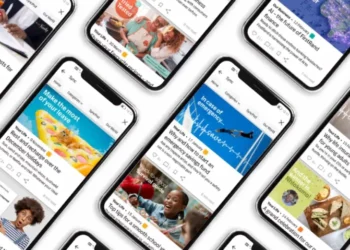The countdown to The Media Connection’s unveiling of its collective brand has begun. The agency will now be operating in tandem with The Brand Connexion and The Mobi Connection and booting out the perception that it’s an ‘old fashioned’ sales house that simply sells community radio airtime.
The Media Connection’s Judy Milne said this week that the company has experienced a “strange phenomena”. While many community media operations have been severely impacted by the economic downturn, The Media Connection has reports exactly the opposite.
“In fact our revenue surged when others around us were retrenching their staff. We believe it had to with the fact that marketers had to think twice before spending on the ‘traditional’, more expensive mediums available and realised that they get far more value for their rand using such a focused yet national opportunity that community radio provides. So from our perspective, community radio did not suffer as badly as others in the industry did,” Milne said.
“By expanding our services, we believe that this will see community radio becoming a multi-faceted advertisers dream, rather than an isolated, out of sight and largely ignored medium,” she added.
The Media Connection’s strategy is to tap into the 7 858 000 national community radio listeners, representing 21% of the total radio-listening population (December RAMS release).
“We have a feeling in our bones that the future of community radio is incredibly bright. People are going to sit up and take notice. Community radio is not an inconsequential slice of the media pie any longer. It deserves to finally be acknowledged and be an absolute must on an advertising plan,” Milne said.
“Our rebranding shows that we have developed into a a sought-after, solutions driven company through engaging in new, non-traditional ways of tapping into these listeners.”
This strategy dovetails with The Brand Connexions use of outdoor platforms such as townships areas, taxi ranks, remote and urban communties coupled with activation mechanisms like road shows, vehicle wrapping and corporate clothing.
Milne elaborates. “The only challenge The Brand Connexion has experienced thus far is how to cope with the demand for our vehicles. The combination of live on the ground presence in townships, taxi ranks, schools, dusty streets and sports stadiums, connecting live to community stations, favourite local DJ’s right there with our vehicles, music, dance, competitions, promotions etc, backed up and driven by radio advertising specific to the area of the activation a is proving to be such a winning combination,” she explained.
The Mobi Connection offers clients a more complete service creating synergy between traditional marketing and the new world of cellular mobile advertising.
“There are 110 community radio stations in South Africa. We have facilitated a mobisite for 54 of them at this stage. These sites went live at the end of January 2011. More are being added to the platform over the next few weeks as stations come on board with this exciting form of marketing technology.
“These are compressed, mobile phone compatible ‘websites’ that can be accessed by their listeners on their cell phones. A mobisite creates a single column, mobile friendly view and is considered by many to be the most effective channel for marketing and advertising,” said Milne.
The facts, she said, are that:
– Less than 16% of South Africans access traditional forms of internet connectivity (AMPS June 2010) and browsing the average website on a cell phone can be an unpleasant and often incomplete experience. Mobisites are compliant with any handset that is browser enabled.
– 73.8 % of South Africa’s working population owns a cell phone (source: AMPS June 2010) and take their daily lives out with them, talking, texting, exchanging email, shopping, applying for jobs and effectively creating a fertile ground for marketers to interact with mobile consumers. Cellular phone manufacturers will soon no longer be releasing phones that are not browser enabled.
– A well placed click-through banner of a marketer on all or strategically selected community radio station mobisites will provide for the cellular user an experience that can be decided upon by the client. A specially designed landing page or alternatively a client-owned mobisite can await the participant and provide an informative, educational or call to action opportunity.
– Voting, registering, entering competitions, feedback, events etc can be available on mobi.
– Fledgling SA music artists have approached The Mobi Connection to launch their music in their communities via downloadable tracks.
– Government departments and municipalities can communicate with their local population in the vernacular of the area.
– Another example, on the mobisites of the stations unique to the Western Cape there is a link to the Western Cape Rape Crisis Centre allowing rape victims and their families an opportunity to get help via the station mobisite.
– Social networking, podcasts, presenters blogs, comment lines, Twitter – all will eventually be available on these stations.
– Connecting with your target market while they are on the move is an empowering, engaging and meaningful experience for them. Their cell phones are an intimate means of communication, and allow them choice of access 24 hours a day.
– Cellular users can return many times to view a mobisite as and when they can, unlike a traditional radio advert that can be missed, or partially remembered, so information contained on a mobisite extends the life of a radio campaign extensively.
– SMS Shortcodes can be linked onto mobisites also giving measurable, quantifiable feedback to advertisers.
– Spreadsheets and graphs can be extracted showing unique station, community, and cellular user information that can be utilised by the advertiser in future campaigns.
It’s a brave new world for community radi0 – and advertisers!














